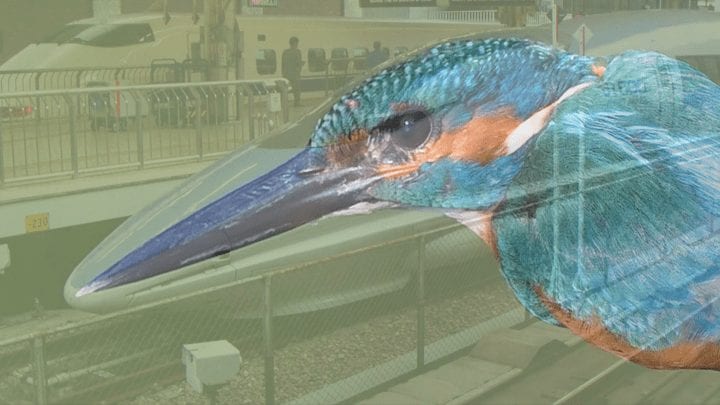The Shinkansen bullet train from JR-West
Benefits
- Reduced energy use
- Reduced noise
- Increased efficiency
Applications
- Railway vehicles
UN Sustainable Development Goals Addressed
-

Goal 11: Sustainable Cities & Communities
The Challenge
The Shinkansen bullet train travels along high-speed railways throughout Japan at speeds of 240–320 km/hr (150–200 mph), carrying millions of passengers every year. However, when it was first designed, the high speeds caused an atmospheric pressure wave to build up in front of the train. When it would travel through tunnels, the wave would cause a loud “tunnel boom” at the exit, disturbing nearby residents. The engineers had to find a way for the train to travel more quietly without sacrificing speed or using more energy.
Innovation Details
The engineers looked to nature to re-design the bullet train. They noticed how kingfisher birds are able to slice through the air and dive into the water to catch prey while barely making a splash. They then re-designed the front end of the train to mimic the shape of the kingfisher’s beak. Not only did this help to reduce noise and eliminate tunnel booms, it also allowed the train to travel 10% faster using 15% less electricity.

Biological Model
The kingfisher is a bird that dives into water to catch its prey. It has a long, narrow pointed beak that allows it to enter the water while barely making a splash. The beak steadily increases in diameter from the tip to the head, which helps reduce impact when the bird hits the water.






